
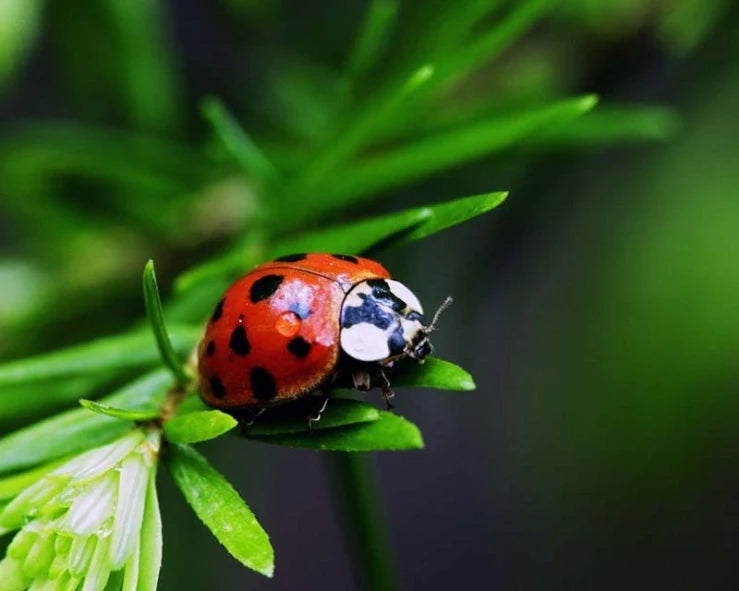
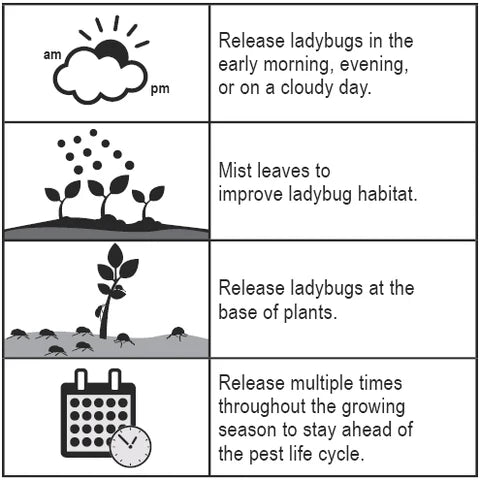

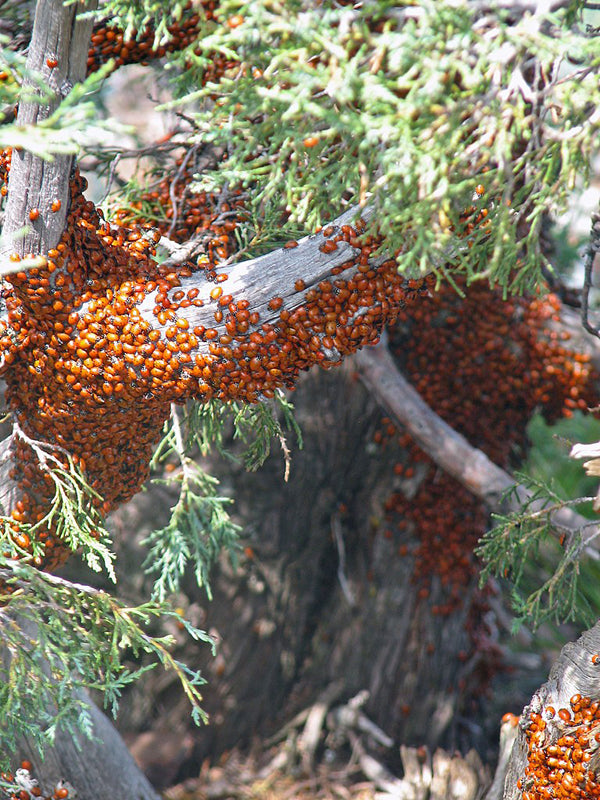
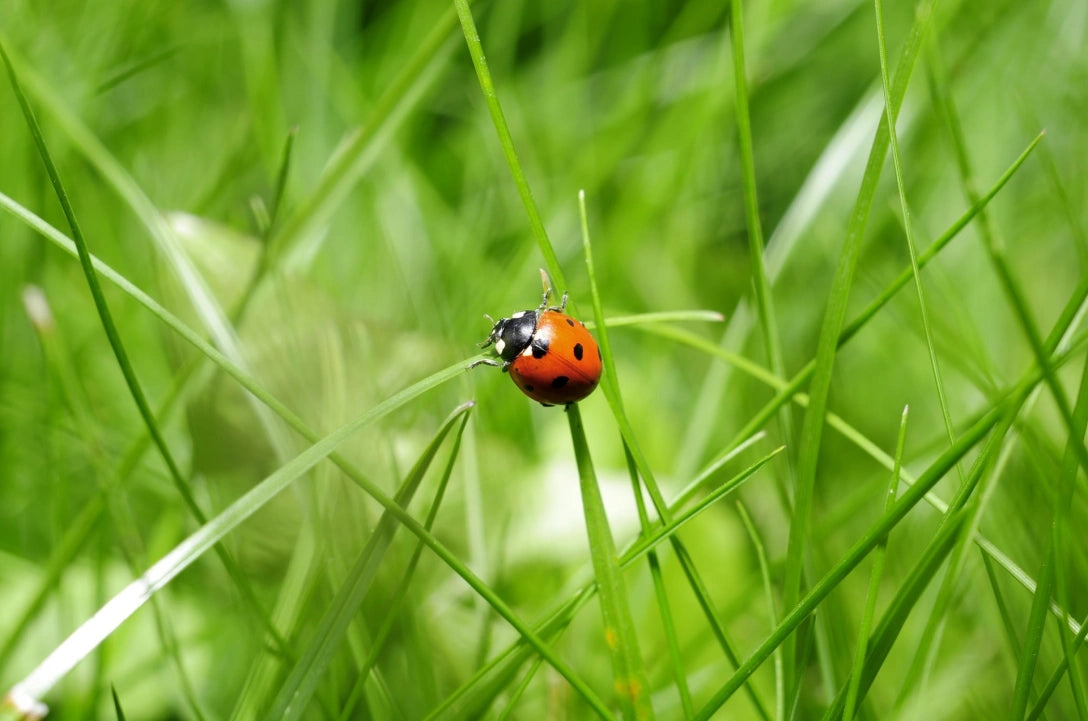
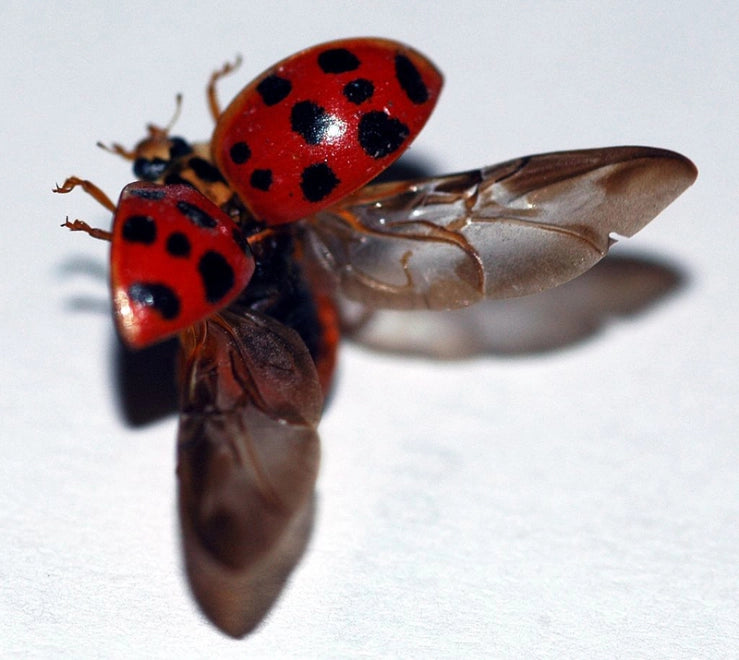
Lady Bugs
$24.00 - $147.00
ABOUT LADYBUGS (HIPPODAMIA CONVERGENS):
Hippodamia convergens, commonly known as the native ladybug, can be found throughout the United States. Our pre-fed Ladybugs serve as excellent general predators in various settings such as organic gardens, greenhouses, grow rooms, patios, rooftop gardens, interiorscapes, and any other location where pests are present.
- A group of ladybugs is called a loveliness. (How cool is that?)
- And when they’re hibernating in groups of thousands, they’re called an aggregation.
Ladybugs, which control pests in your garden, are the most popular and widely used beneficial insects for both commercial and home use. Ladybugs are capable of consuming up to 50 to 60 aphids per day. Still, they will also eat a variety of other insects and larvae, including scales, mealy bugs, leaf hoppers, mites, and various types of soft-bodied insects. Ladybugs, also known as lady beetles or ladybird beetles, are a highly beneficial group of insects. Ladybugs are natural enemies of many insect pests, and it has been demonstrated that a single ladybug may consume as many as 5,000 aphids in its lifetime.
- Let the ladybugs do the work for you. Release them in the desired area and witness their ability to eliminate harmful insects that can cause damage to your plants.
- Promote a thriving backyard ecosystem! Experience improvements in the health of your plants without the need for harmful chemical pesticides.
- Enhance your harvest by maximizing plant productivity. Healthy plants tend to yield more.
- Our Ladybugs are natural, organic, sustainable, and safe for kids and pets.
TARGET PESTS:
Ladybugs are natural predators to aphids, mealybugs, spider mites, thrips, and many other soft-bodied insects.
LADYBUG LIFE-CYCLE:
Egg: 2-5 days | Larvae: 21 days | Pupa: 7 days | Adult: 1 year
RELEASE RATES:
LIGHT INFESTATION:
Release one ladybug per square foot, monthly.
MODERATE INFESTATION:
Release one ladybug per square foot, bi-weekly, 2-3 times.
HEAVY INFESTATION:
Release 1 ladybug per square foot, weekly, 2-4 times.
HOW TO RELEASE:
- Release ladybugs in the early morning, evening, or on a cloudy day when the temperatures are cooler.
- Mist leaves to improve the ladybug habitat. Misting the foliage beforehand may improve performance. With ample food and moisture, ladybugs can begin to reproduce immediately.
- Release ladybugs at the base of the plants.
- Release multiple times throughout the growing season to stay ahead of the pest lifecycle.
-
STORAGE:
For best results, store ladybugs in the original shipping box at a temperature between 34°F and 45°F for no longer than two weeks. Refrigerate, do not freeze.LADYBUG NECTAR:
To provide your Ladybugs with additional nourishment, nectar can be used as a supplementary food source. All you need to do is mix it with water and spray it onto the foliage when you release the Ladybugs. This will provide them with an immediate source of sustenance, helping them recover from the stress of transit and enhancing their performance.







